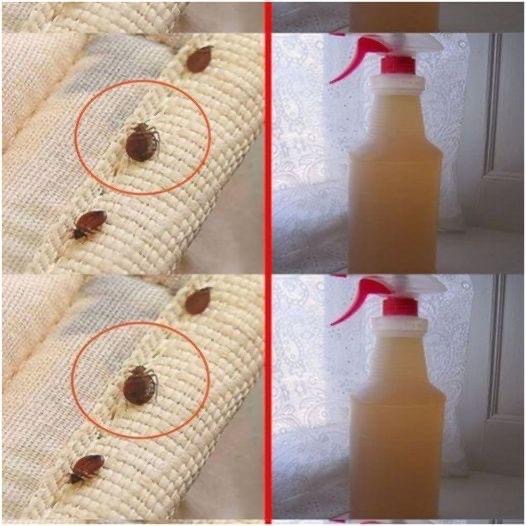Bedbugs are a homeowner’s nightmare. These tiny pests can cause sleepless nights, itchy bites, and a lot of frustration. They often hide in the seams of mattresses, bed frames, and other furniture, making them difficult to detect and eliminate. Fortunately, getting rid of bedbugs from your mattress is possible with a combination of natural methods, thorough cleaning, and vigilance.
In this blog post, we’ll walk you through step-by-step instructions on how to get rid of bedbugs from your mattress, as well as preventative measures to ensure they don’t return.
Signs of Bedbugs in Your Mattress
Before you start tackling the problem, it’s important to identify whether you actually have bedbugs in your mattress. Here are some signs to look out for:
- Bites: Bedbugs feed on human blood, typically at night. Their bites often appear in clusters or lines on exposed areas of skin.
- Bloodstains: You may notice small, rusty-colored blood spots on your sheets from crushed bedbugs.
- Bedbug Fecal Spots: Small black or brown dots on your mattress or bedding can be bedbug feces.
- Shed Skins: As bedbugs grow, they shed their exoskeletons. Finding these small, translucent skins near your bed is another indication of their presence.
- Live Bedbugs: If you closely inspect the seams and folds of your mattress, you might spot live bedbugs. Adult bedbugs are about the size of an apple seed, reddish-brown, and oval-shaped.
Once you confirm the presence of bedbugs, it’s time to take action.
Step-by-Step Guide to Get Rid of Bedbugs from Your Mattress
1. Strip Your Bed and Wash Everything
- Remove all bedding: Start by stripping your bed completely, including sheets, pillowcases, mattress covers, and any fabric materials that could be infested.
- Wash and dry on high heat: Place all of your bedding in the washing machine and wash on the hottest setting. After washing, dry them in the dryer on high heat for at least 30 minutes. Bedbugs can’t survive in high temperatures, and this will kill any eggs, nymphs, or adults hiding in the fabric.
2. Vacuum the Mattress Thoroughly
- Vacuum the mattress: Use a vacuum cleaner with a strong suction and a crevice tool to clean your mattress thoroughly. Pay special attention to seams, tufts, edges, and the underside of the mattress. Bedbugs like to hide in these small crevices.
- Empty the vacuum: After vacuuming, immediately empty the vacuum bag or canister into a sealed plastic bag and discard it in an outdoor trash bin. This ensures any bedbugs or eggs that were vacuumed up don’t escape back into your home.
3. Steam Treatment for Deep Cleaning
- Use a steamer: If you have access to a handheld steamer, this is one of the most effective ways to kill bedbugs deep within your mattress. The high temperatures from the steam (above 120°F or 49°C) will kill both bedbugs and their eggs on contact.
- Steam the entire mattress: Slowly pass the steamer over the entire surface of the mattress, paying extra attention to the seams, edges, and any folds. Steam the sides and bottom as well to ensure you cover all possible hiding spots.
4. Apply Bedbug-Specific Spray or Diatomaceous Earth
- Bedbug sprays: After steaming, you can apply a non-toxic, bedbug-specific spray to your mattress. Look for sprays that contain ingredients like pyrethrin or silica gel, which are known to kill bedbugs.
- Diatomaceous earth (DE): Another natural option is to sprinkle food-grade diatomaceous earth along the seams and edges of your mattress. DE is a fine, powdery substance that dehydrates and kills bedbugs over time by damaging their exoskeletons. Let it sit for a few hours, then vacuum it up. Be careful when applying DE, as inhaling large amounts can be harmful to humans and pets.
5. Encase the Mattress and Box Spring
- Use a mattress encasement: After cleaning and treating your mattress, consider using a bedbug-proof mattress encasement. These encasements completely seal the mattress, trapping any remaining bedbugs inside and preventing new ones from entering. Over time, any trapped bedbugs will starve and die, as they can’t escape to feed.
- Encase the box spring: Bedbugs love to hide in the box spring as well, so it’s a good idea to encase your box spring with a bedbug-proof cover as well.
6. Inspect and Treat the Bed Frame and Surrounding Area
- Check the bed frame: Bedbugs often hide in cracks and crevices in the bed frame, headboard, and nearby furniture. Use a flashlight to inspect these areas for signs of bedbugs. You can use a stiff brush or a vacuum to clean out any cracks.
- Treat the surrounding area: If bedbugs are present in your mattress, it’s likely they’ve spread to the surrounding area. You can use bedbug spray or diatomaceous earth to treat the bed frame, carpet, and any nearby furniture.
7. Prevent Bedbugs from Returning
- Declutter the bedroom: Bedbugs love to hide in clutter, so keep your bedroom as clean and tidy as possible. Avoid storing items under the bed, and reduce any piles of clothes or papers where bedbugs can hide.
- Inspect secondhand furniture: If you’re buying used furniture or mattresses, inspect them thoroughly for signs of bedbugs before bringing them into your home.
- Regular vacuuming: Regularly vacuum your mattress, bed frame, and surrounding area to prevent a bedbug infestation from reoccurring.
Natural Remedies to Repel Bedbugs
In addition to cleaning and treating your mattress, you can use natural repellents to deter bedbugs from returning:
- Lavender essential oil: Bedbugs are repelled by the smell of lavender. Mix a few drops of lavender essential oil with water in a spray bottle and lightly spray your bedding and mattress.
- Tea tree oil: Tea tree oil has natural insecticidal properties. Dilute it with water and spray it on your mattress, bed frame, and furniture.
- Peppermint leaves: Bedbugs dislike peppermint. You can place dried peppermint leaves under your mattress and in corners of your room to deter them.
Conclusion: Say Goodbye to Bedbugs with These Effective Methods
Getting rid of bedbugs from your mattress can be a daunting task, but with the right tools and techniques, you can reclaim your bed and sleep peacefully once again. By thoroughly cleaning, vacuuming, steaming, and treating your mattress, you can eliminate bedbugs and prevent future infestations.
Don’t forget to encase your mattress and box spring, and stay vigilant by regularly inspecting and cleaning your bedding. By following these steps, you can successfully get rid of bedbugs and keep them out of your home for good.
Disclaimer: If you have a severe bedbug infestation, it may be necessary to consult with a professional pest control service for more comprehensive treatment.


